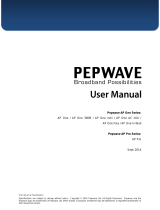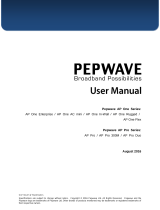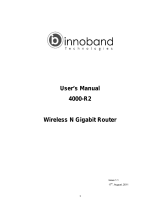
Click here for full instructions on setting up L2TP with IPsec.
6 Installation
The following section details connecting Pepwave routers to your network.
6.1 Preparation
Before installing your Pepwave router, please prepare the following as appropriate for your
installation:
● At least one Internet/WAN access account and/or Wi-Fi access information
● Depending on network connection type(s), one or more of the following:
●Ethernet WAN: A 10/100/1000BaseT UTP cable with RJ45 connector
●USB: A USB modem
●Embedded modem: A SIM card for GSM/HSPA service
●Wi-Fi WAN: Wi-Fi antennas
●PC Card/Express Card WAN: A PC Card/ExpressCard for the
corresponding card slot
● A computer installed with the TCP/IP network protocol and a supported web browser.
Supported browsers include Microsoft Internet Explorer 8.0 or above, Mozilla Firefox
10.0 or above, Apple Safari 5.1 or above, and Google Chrome 18 or above.
6.2 Constructing the Network
At a high level, construct the network according to the following steps:
1. With an Ethernet cable, connect a computer to one of the LAN ports on the Pepwave router.
Repeat with different cables for up to 4 computers to be connected.
2. With another Ethernet cable or a USB modem/Wi-Fi antenna/PC Card/Express Card, connect to
one of the WAN ports on the Pepwave router. Repeat the same procedure for other WAN ports.
3. Connect the power adapter to the power connector on the rear panel of the Pepwave router, and
then plug it into a power outlet.
The following figure schematically illustrates the resulting configuration:




























